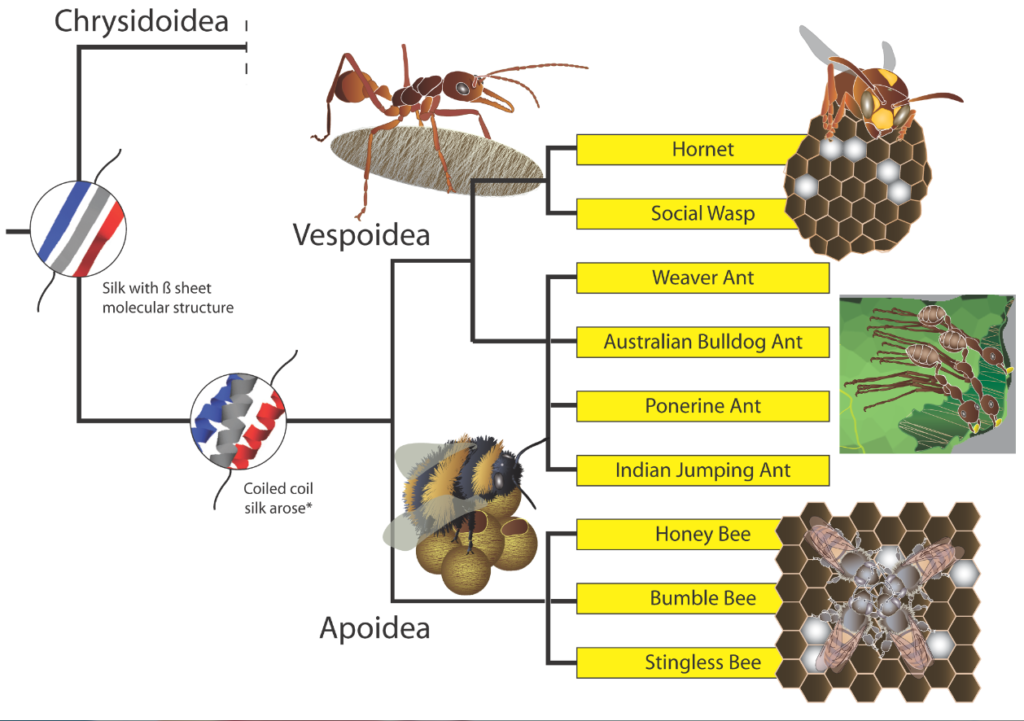The CSIRO Silks group is primarily interested in using proteins as polymers for rational design. Naturally occurring structural proteins are ‘information-rich’ molecules. Based on the precedent set by nature, these structural proteins provide a rich landscape for the rational design of advanced functional materials. Advances in molecular biology make it possible to readily modify the primary sequence of recombinant proteins allowing the design of advanced materials.
Our focus areas
Protein discovery
We have investigated many different insect silks to identify those which are suitable for materials production and modification. Please see our publication list for detail on many of these unusual silks. We identified that the bee, ant and wasp silks have a molecular structure that is suitable for commercial level production and is tolerant of amino acid substitutions.
Materials design
We are now designing new materials based on our recombinant structural proteins with atomic level precision. We have fabricated silk-heme materials that can function as nitric oxide sensors, with a limit of detection for dissolved nitric oxide of 1 µM, or as recoverable heterogenous biocatalysts with heme-peroxidase activity. These materials retain their functional properties after being stored at room temperature for over one year and in a range of organic solvents, weak acids, and bases.
Not available. Please contact launch.org
CSIRO’s research into design of information-encoding materials was recognised by the Launch System Challenge. This short video describes what we are trying to do.




